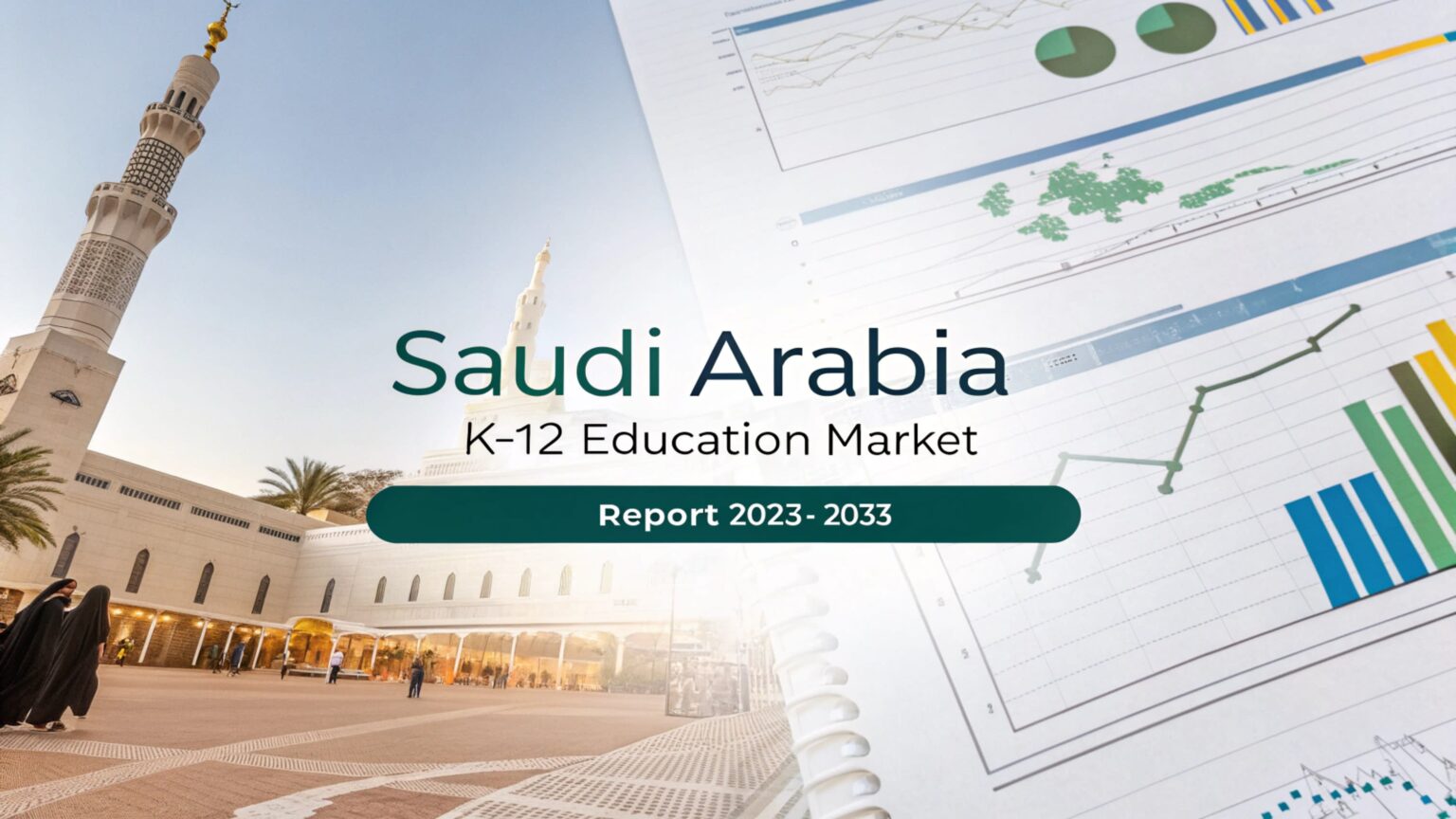The story of higher education in Saudi Arabia is no longer only about classrooms and degrees. It is about a national transformation that is reshaping lives, livelihoods and long term economic prospects. With the market projected to grow to USD 1,384.4 million by 2033 at a remarkable 20.26 percent compound annual growth rate, this sector is changing from a public service into a strategic engine for social mobility and national competitiveness. This article walks through what that growth means, why it is happening, who benefits, and what challenges must be managed along the way.
A human picture behind the numbers
Numbers alone can feel remote. Behind the USD 1,384.4 million projection are young people leaving small towns for campus life, families recalibrating hopes for their children and educators reimagining what a university can be. For many students, higher education is now a bridge into new careers in technology, health care, renewable energy and services. For employers, it is a chance to find home grown talent who understand the cultural context and the pace of change in the Kingdom. This human story is what makes the market forecast both exciting and meaningful.
Why the market is expanding so fast
There are several forces accelerating higher education growth in Saudi Arabia. First, demographic momentum means large cohorts of young people are entering the university age bracket. Second, national policy is prioritizing education as a core pillar of economic diversification. Third, new delivery models such as online learning and hybrid programmes are widening access and driving enrolment. Fourth, the private sector is stepping up with new institutions, partnerships with international universities and vocational training providers. Together these factors create a fertile environment for rapid growth.
Government vision and strategic investment
Government policy is at the heart of the change. Investments in scholarship programmes, campus modernisation and digital infrastructure are making higher education more accessible and more aligned with labour market needs. Initiatives to improve quality assurance and to encourage research and innovation are also strengthening universities so they can compete globally. For many Saudi families these public commitments translate into a clear pathway from study to stable jobs and meaningful careers.

Digital transformation and new learning models
Digital technology is rewriting the rules of teaching and learning. Online courses, micro credentials and blended learning give students the flexibility to study while working and to choose programmes tailored to specific skills. Edtech platforms and learning analytics help universities personalise instruction and improve retention. For students who live far from urban centres, remote learning is often the only practical option. This digital shift also opens doors for international collaborations and for foreign institutions to deliver programmes locally in partnership with Saudi providers.
Private sector momentum and international partnerships
Private universities and training providers are expanding rapidly. They bring agility and an appetite for innovation. Many of these providers form partnerships with established international institutions to offer joint degrees and to raise quality standards. Employers are also collaborating with universities to design curricula that match real world needs. These alliances shorten the time between classroom learning and workplace readiness. For entrepreneurs and investors, higher education now looks like a practical and impactful growth sector.
New opportunities for students and graduates
Students stand to gain the most tangible benefits. More programmes mean more choice. A broader range of technical and professional degrees gives students routes into high demand fields such as data science, renewable energy, health care and advanced manufacturing. Short courses and micro credentials let learners upskill quickly and stay relevant in a fast changing job market. Graduates benefit from stronger links between campuses and employers that increase internship and placement opportunities.
Economic ripple effects beyond campuses
Growth in higher education drives demand in housing, transportation, retail and technology. Cities with major universities often see neighbourhood revitalisation as students and staff create vibrant local economies. Research and innovation activities can spawn startups and attract foreign direct investment. Over time, a strong higher education ecosystem supports broader ambitions for economic diversification and for making the Kingdom a regional hub for knowledge and talent.
Challenges that require honest attention
Rapid growth brings challenges. Ensuring consistent quality across new and existing institutions is essential. Scaling teacher training and hiring qualified faculty are pressing needs. Equity and inclusion must remain priorities so that gains reach students from rural and disadvantaged backgrounds as well as urban elites. Matching curricula to labour market needs takes sustained coordination between government, academia and industry. Governance and regulatory frameworks must remain adaptive without compromising standards.

Real world risks and how they can be managed
There are risks related to over expansion, mismatches between graduate skills and employer needs, and potential unevenness in institutional quality. Thoughtful regulation, transparent accreditation and consistent investment in faculty development can reduce these risks. Equally important is supporting lifelong learning so that today s graduates can continue to reskill as job market requirements change.
What investors and institutions should consider
For investors the high CAGR and projected market size signal opportunity, but success depends on partnering with credible local players and focusing on programmes with strong employment outcomes. Institutions that prioritise student experience, industry relevance and flexible learning modalities will attract greater demand. Investments in digital platforms and in vocational learning that leads to certification can unlock large untapped segments of the market.
The student experience in a transforming system
Students today want more than a degree certificate. They want mentoring, real world projects, internships and career support. Universities that build soft skill programmes, entrepreneurship incubators and industry collaborations will stand out. For many learners, especially adult learners balancing family and work, micro credentials and modular programmes provide the only realistic route to advancement.
Impact on the Saudi workforce and society
A stronger higher education sector directly supports workforce localisation and the development of new professions. As more graduates enter technical and professional fields, businesses gain access to locally trained talent which reduces reliance on expatriate labour. Socially, wider access to quality higher education contributes to greater social mobility, higher household incomes and more resilient communities.
A human first approach to scaling education
Growth should not be measured only in money and enrolment figures. A human first approach focuses on student wellbeing, community ties and meaningful outcomes. That means designing campuses and programmes that support mental health, that offer career counselling and that create safe inclusive spaces. When policy makers and institutions put the person at the centre, the economic returns follow naturally.
Looking ahead to 2033 and beyond
If the sector keeps advancing along the projected trajectory, by 2033 higher education in Saudi Arabia will look very different from today. More campuses will offer cutting edge curricula, international partnerships will be commonplace, and digital credentials will sit alongside traditional degrees. The market projection of USD 1,384.4 million by 2033 reflects more than growth in revenue. It reflects expanded access, upgraded quality and deeper alignment between education and national development goals.
Final thoughts: why this matters to everyday people
At the heart of this growth are individual stories. A young woman in a provincial town gaining a degree that opens a new career. A mid career professional reskilling with a short course to change industries. An entrepreneur launching a startup that grew from a university research project. These personal transformations are the real return on investment. As the market grows, so do possibilities for millions of Saudis to contribute to and benefit from a more diversified and resilient economy.
The projected growth of the higher education sector in Saudi Arabia is a sign of optimism. It is a story of policy, people and possibility working together. With thoughtful action to manage risks and with a continued focus on human outcomes, this expansion can deliver lasting benefits for students, families, employers and the wider society.
Do follow Gulf Magazine on Instagram.
Also Read – Tim Baker to Lead BPG Arabia’s Digital Growth in Saudi Arabia



